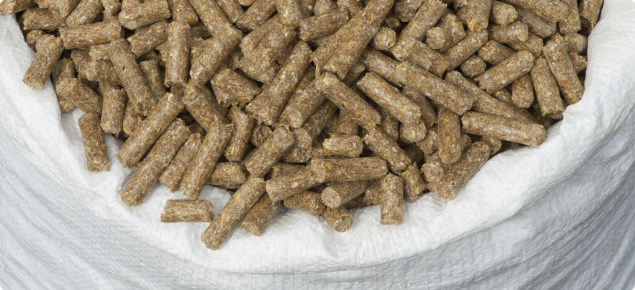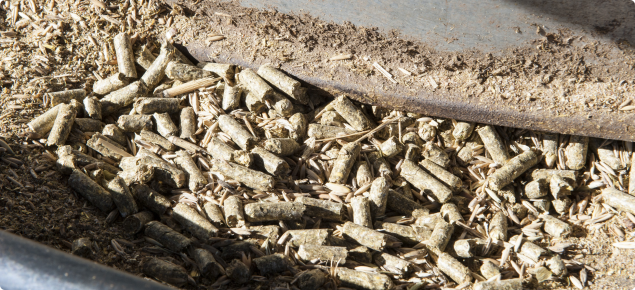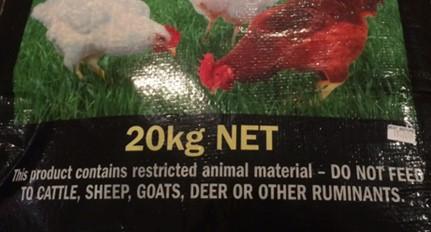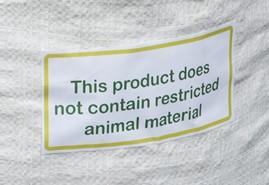Why is it important to label feed correctly?
Correct labelling of animal feed reduces the chances that livestock will accidentally be given unsuitable feed. If unsuitable feed is given to an animal, it can potentially lead to:
- the introduction or spread of serious diseases, such as mad cow disease in cattle and scrapie in sheep (transmissible spongiform encephalopathies, TSEs)
- chemical residues in meat, milk or eggs produced from animals.
Feed must also be labelled correctly so if a batch of feed is found to be contaminated, it can be traced to its place of manufacture and the rest of the batch can also be traced and recalled.
If meat, milk or eggs are found to contain harmful residues, or a disease such as mad cow disease occurs in WA, it could put the health of people and animals at risk and Australia could lose access to important overseas markets.
Ruminant feed ban requirements
One of the most important elements of the stockfeed label is the statement regarding restricted animal material (RAM).
RAM is any material from a vertebrate animal other than milk, milk products, gelatine, tallow, or used cooking oil meeting certain specifications. It includes all types of meat, eggs, and products such as meat and bone meal, feather meal and fish meal.
Feeding RAM to ruminants (such as cattle, sheep, goats, deer and alpacas) is prohibited under the Australian ruminant feed ban, as it can lead to the introduction and spread of TSEs. People buying stockfeed should check if the feed contains RAM. If it does, it’s not safe to feed it to a ruminant. Read more about the ruminant feed ban and RAM.
Legislation
The labelling requirements for manufactured stockfeed sold or supplied in WA are prescribed in the Biosecurity and Agriculture Management (Agriculture Standards) Regulations 2013. Copies of the regulations are available from legislation.wa.gov.au.
DPIRD conducts regular compliance inspections of stockfeed manufacturers, retailers and producers to ensure feed is supplied in accordance with the regulations. Failure to comply with the regulations may lead to prosecution.
What types of stockfeed must be labelled?
Livestock feed that must be labelled
Manufactured animal feed sold or supplied in WA must be labelled.
This includes:
- processed feed, such as pellets, and any mixes containing processed feed
- mixes containing processed feed
- licks (both loose and block licks)
- feed containing additives or supplements including medications
- feed containing by-products from the production of animal feed or food for human consumption. Examples of by‑products include hulls, pulp, brewery spent grains, meals (both animal meals such stock as meat and bone meal, and plant based meals such as oil seed meal), and molasses.
The requirements apply to both bagged and bulk feed, including manufactured stockfeed re-bagged by a retailer.
Livestock feed exempt from labelling
Basic feeds (e.g. grains, seeds, hay and chaff) do not need to be labelled, as long as it is clear from the product name or elsewhere on the container that it is made of basic feed (e.g. ‘whole lupins’).
This includes:
- basic feeds that have undergone minimal treatment, such as rolled, cracked, cut or steamed grains (e.g. rolled oats and chaff)
- mixes of basic feeds, as long as it is clear on the packaging what it contains (e.g. ‘cracked wheat and lupin mix’).
Feed for dogs, cats, guinea pigs, rodents and household birds and fish are also exempt from labelling requirements. Household birds and fish are those species kept as domestic pets, not for human consumption.
Birds that lay eggs for eating (e.g. chickens and ducks), even if kept at home, are not exempt.
Summary of labelling requirements
The information that must be provided on stockfeed labels depends on whether it is:
- packaged in a small bag or container weighing less than 5 kilograms (kg)
- packaged in a large bag or container weighing 5kg or more (unless it is a bulka bag)
- sold loose, or in bulka bags.
The stockfeed labelling table summarises the information required on the labels for each of these, for animal feed manufactured in WA and supplied in Australia. For information on labelling requirements for stockfeed that is to be exported, please see the regulations or contact us.
Packaged stockfeed sold in large quantities
If 500kg or more of manufactured stockfeed packed in bags or containers is sold to a single person in a single transaction (e.g. a pallet of 25kg bags), the supplier may choose to:
- label each bag or container separately as per the requirements for packages weighing 5kg or more or
- include on the delivery docket the information as per the requirements for loose and bulka bags, and also label each bag or container with:
- ‘this bag must not be sold separately’ or words to that effect
- trade name
- the animals and the age of animal it is manufactured for (if not in the trade name)
- name and address of the principal place of business of the manufacturer or distributor.
Types of labels
Labels may be printed or stencilled onto the bag or container, or attached as a separate item (e.g. sewn-in labels and stuck-on labels).
Labels must be legible, conspicuous, and written in English (languages other than English may also be included). If the label is attached as a separate item, the label must be at least 120mm long by 45mm wide.
Labelling feed sold loose or in bulka bags
For manufactured stockfeed sold loose, the delivery docket is taken to be the label.
For livestock feed supplied in bulka bags, the label information can be on a slip attached to each bulka bag or included on a delivery docket.
Restricted animal material statements
All manufactured stockfeed sold in WA requires labelling with a restricted animal material (RAM) statement specifying if a stockfeed contains RAM (see the section on ruminant feed ban requirements for more information).
RAM statement wording
If the stockfeed contains RAM it must be labelled with this statement:
-
This product contains restricted animal material. DO NOT FEED TO CATTLE, SHEEP, GOATS, DEER OR ANY OTHER RUMINANTS.
If the stockfeed does not contain RAM, it must be labelled with this statement:
- This product does not contain restricted animal material.
Size of RAM statement
If the RAM statement is printed or stencilled on a feed bag or container weighing 5kg or more, the letters of the RAM statement must be at least 10mm high.
For all other RAM statements, the letters must be at least 3mm high.
Medicated stockfeed
WA legislation requires manufactured stockfeed containing any veterinary chemical product, including medicated premixes, to be labelled with the following information on the package or container (for bagged feed) or delivery docket (for bulk feed):
- the words ‘medicated animal food stuff’ or ‘for animal treatment only’
- the name and concentration of the active constituents of the veterinary chemical product
- the purpose of the veterinary chemical product
- any warnings or precautionary statements applicable to the veterinary chemical product
- directions for the use of the stockfeed
- if a withholding period applies to the stockfeed, the period in bold capital letters.
These labelling requirements are additional to those of the Department of Health under the Medicines and Poisons Act 2014. Further, the Australian Pesticides and Veterinary Medicine Authority (APVMA) has a number of conditions that must be met for the manufacture and sale of medicated feed or premixes. More information is available from the APVMA webpage on animal feed, at apvma.gov.au.
For more information on the labelling requirements for medicated stockfeed, please contact us.
Stockfeed labelling summary
| Information to be provided on stockfeed labels (container for bagged, delivery docket for bulk) | Less than 5kg | 5kg or more | Loose / bulka bag |
|---|---|---|---|
| Restricted animal statement (positive or negative) | Yes | Yes | Yes |
| If medicated, the relevant information (see medicated stockfeed section above) | Yes | Yes | Yes |
| Trade name | Yes | Yes | Yes |
| Net weight of feed | Yes | Yes | Yes |
| Animals and ages of animals the feed is manufactured for (if not in trade name). Age category / life stage is sufficient e.g. grower / chick | Yes | Yes | No |
| Name and address of the principal place of business of the distributor or manufacturer (* distributor only) | Yes * | Yes | No |
| Name of the person to whom it is supplied | No | No | Yes |
| Directions for use | No | Yes | No |
| Storage instructions | No | Yes | No |
| Expiry date or the best before date | No | Yes | Yes |
| Batch number or date of manufacture | No | Yes | Yes |
| If referring to a vitamin or mineral, the percentage of the daily requirement of the vitamin or mineral the feed provides | Yes | Yes | No |
| If it contains added fibre, maximum crude fibre percentage | No | Yes | No |
| If it contains added protein, minimum crude protein equivalent | No | Yes | No |
| If it contains added salt, maximum salt percentage | No | Yes | No |
| If it contains added urea, urea percentage | No | Yes | No |
| If it has a urea percentage of more than 3%, a warning that urea can be poisonous to stock | No | Yes | No |
Contact information
If you have any questions about the labelling requirements for stockfeed in WA, contact DPIRD’s Livestock Biosecurity team by emailing livestockbiosecurity@dpird.wa.gov.au




